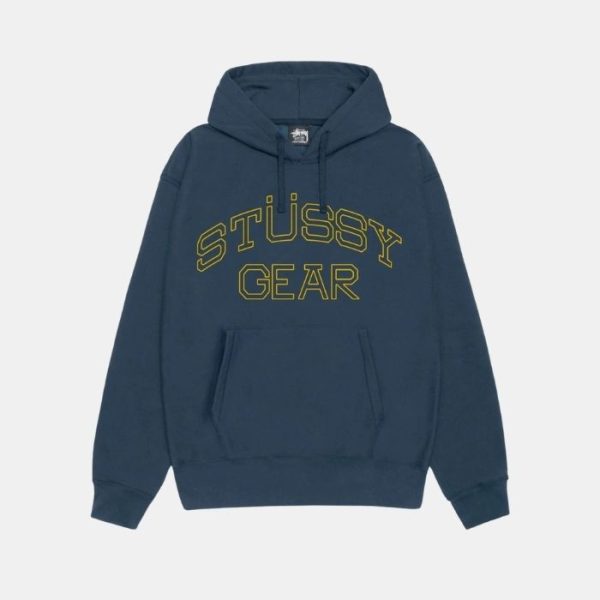Drop Dead:
In a world where fashion is constantly recycling itself, few brands manage to remain truly authentic. But authenticity is exactly what’s made “Drop Dead” a standout force in the realm of alternative fashion. It doesn’t follow the rules. It doesn’t chase trends. Instead, it creates its own universe—raw, strange, emotional, and unforgettable.Founded by Oli Sykes, frontman of the internationally known rock band Bring Me The Horizon, Drop Dead is not just a clothing label—it’s a creative platform, a subcultural icon, and for many, a form of personal identity. Let’s explore how Drop Dead evolved from a homegrown T-shirt brand into a global movement that speaks to the misunderstood, the artistic, and the rebellious.
DIY Roots and Unapologetic Vision
Drop Dead Clothing was born in Sheffield, UK, in 2005. Oli Sykes, who was still rising to fame with Bring Me The Horizon, began designing shirts in his bedroom. These early designs were handmade, sometimes printed in Oli’s kitchen, and sold online through MySpace and eBay.The name “Drop Dead Clothing” was confrontational—intentionally so. It embodied the energy of a brand that didn’t want to be polite or pretty. Instead, it reflected a kind of artistic rebellion: bold graphics, unsettling slogans, and chaotic designs that clashed against the minimalism of mainstream fashion.This wasn’t just streetwear—it was anti-fashion, and it resonated with people who were tired of being told how to look, think, or feel.
Aesthetic Identity: Where Weird Is Welcome
What separates Drop Dead from countless other labels is its unique visual identity. The brand’s designs are equal parts grotesque and playful, blending elements of:
- Cartoon violence
- 90s pop culture references
- Horror, gore, and sci-fi
- Punk graphics and grunge textures
- Satirical and emotional messaging
You might see a deformed teddy bear, a melting eyeball, or a gothic reinterpretation of a childhood icon—all on the same hoodie. And it works. The signature Drop Dead look is nostalgic yet futuristic, cute but creepy, and always emotionally charged.Whether it’s a bloodied cat eating cereal or a lonely skeleton texting an ex, Drop Dead’s designs tell stories. They reflect the anxieties, humor, trauma, and creativity of the people who wear them.
Music, Mental Health, and the Misfit Culture
What makes Drop Dead Clothing more than just a fashion label is its emotional connection with its community. This is a brand for people who have felt like outsiders—for the skaters, the emo kids, the gamers, the introverts, the neurodivergent.
Through its designs and storytelling, Drop Dead openly engages with themes of:
- Mental health
- Loneliness
- Addiction and recovery
- Social alienation
- Self-expression
Collaborations That Break the Mold
A standout aspect of Drop Dead’s evolution is its pop culture collaborations. But unlike many labels that do surface-level partnerships, Drop Dead goes deep. These collabs are crafted with artistic integrity and storytelling, often reimagining childhood icons through a darker, twisted lens.
Notable past collaborations include:
- Sonic the Hedgehog – blending vintage gaming nostalgia with chaotic streetwear.
- The Simpsons: Treehouse of Horror – capturing Halloween vibes in true Drop Dead fashion.
- Gremlins – playful chaos meets punk attitude.
- Jurassic Park – dinosaurs and destruction, reimagined for misfits.
- Rick and Morty – interdimensional insanity styled through glitch-heavy graphics.
Sustainability and Responsibility in a New Fashion Era
As fast fashion comes under scrutiny, Drop Dead is one of the few alternative brands actively embracing sustainability and ethical practices. This isn’t about greenwashing—it’s about living up to the values its audience expects.
Efforts include:
- Vegan-approved materials and cruelty-free manufacturing
- Organic cotton and recycled fabrics used in many items
- Plastic-free packaging and shipping materials
- Ethical labor standards and small-batch production
- Avoiding overproduction by focusing on limited drops
The Gallery-Like Shopping Experience
Unlike many online fashion brands, Drop Dead’s digital presence feels more like an art installation than a typical e-commerce site. Product pages are immersive, complete with stylized photography, mood-based lookbooks, short-form stories, and animated graphics.n the past, the brand has also launched immersive pop-up stores and flagship spaces that felt more like underground galleries than shops. These events showcased not just clothes, but installations, sculptures, videos, and interactive experiences—reinforcing the idea that Drop Dead isn’t just about what you wear, but how you feel in it.
Community and Cult Following
Drop Dead’s audience isn’t passive—they’re participants. Over the years, the brand has built a fiercely loyal global fanbase that shares art, styling, and life stories through social platforms. From TikTok creators to tattoo artists to digital illustrators, Drop Dead’s community is full of creatives who embody the brand’s energy.And Drop Dead actively listens. They repost fan art, respond to comments, feature community models, and even collaborate with fans. It’s not a top-down brand—it’s a collaborative culture.There’s also a shared language among fans: a mutual understanding of emotional depth, artistic passion, and the joy of wearing something that feels like an extension of your identity—not just a trend.
Expanding Creativity Across Platforms
Looking forward, Drop Dead shows no signs of slowing down. In fact, the brand is expanding creatively, moving beyond fashion into digital and experiential territories.
Future projects are rumored to include:
- Virtual fashion drops and AR-integrated designs
- Interactive short films or animated shorts featuring Drop Dead characters
- Pop-up gallery tours across major cities
- Collaborations with tattoo studios, digital artists, and underground musicians
- More mental health-focused campaigns and nonprofit partnerships
A Brand That Speaks for the Silent
Drop Dead Clothing has never tried to be mainstream, and that’s why it thrives. In every T-shirt, every hoodie, every collaboration, and every carefully crafted post, there’s a message: You’re not alone, and your chaos is valid.


